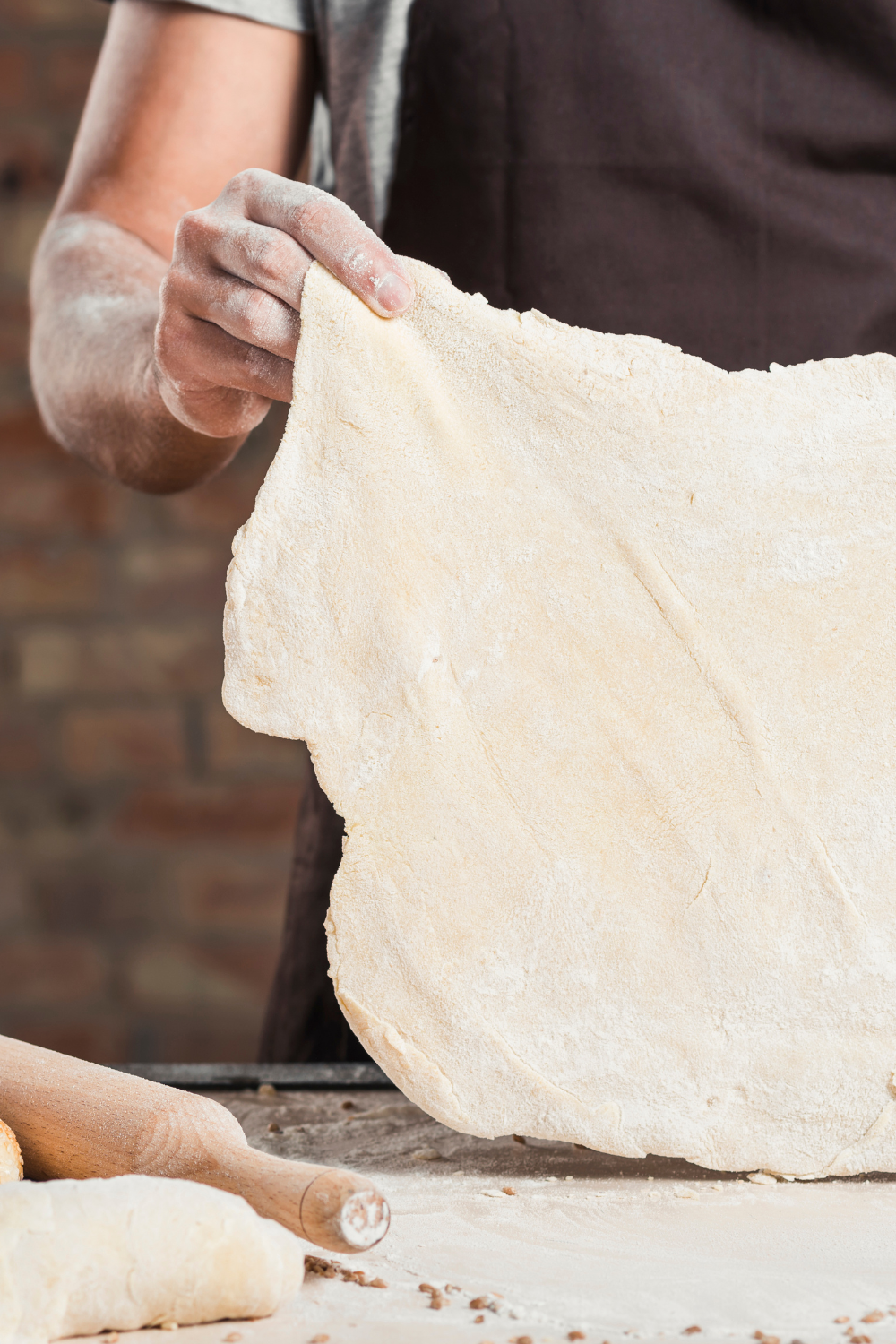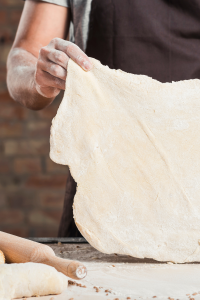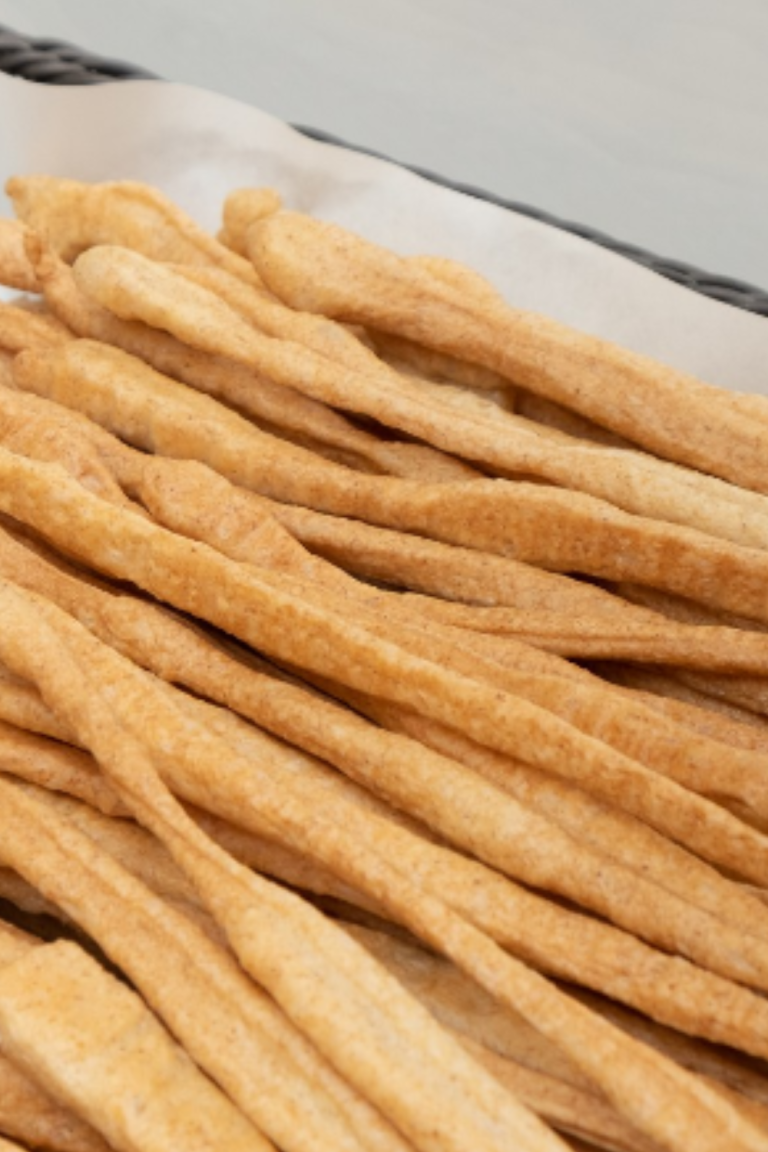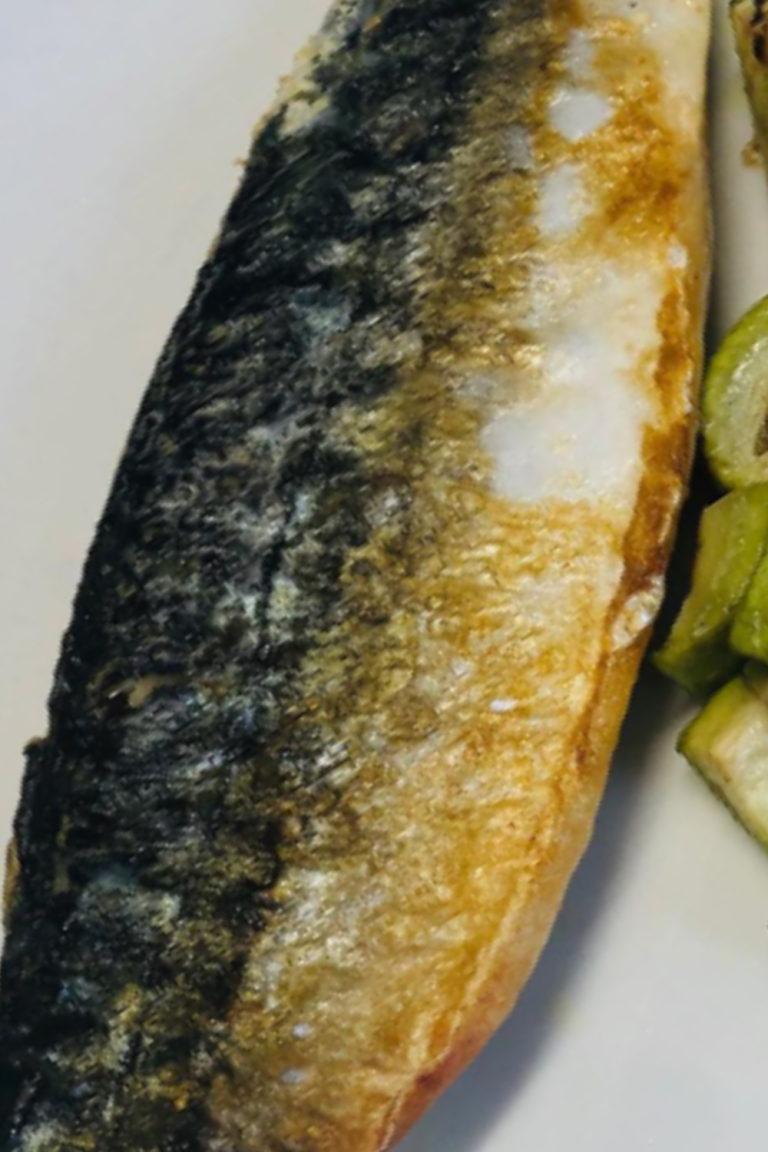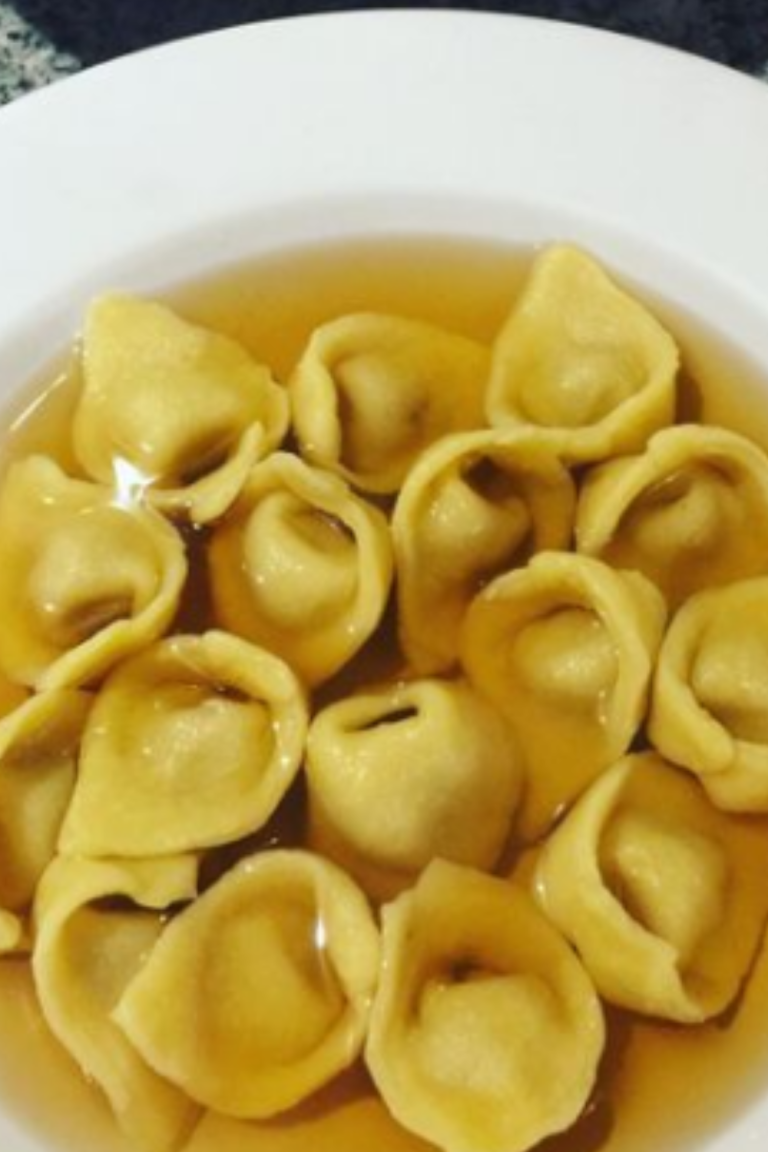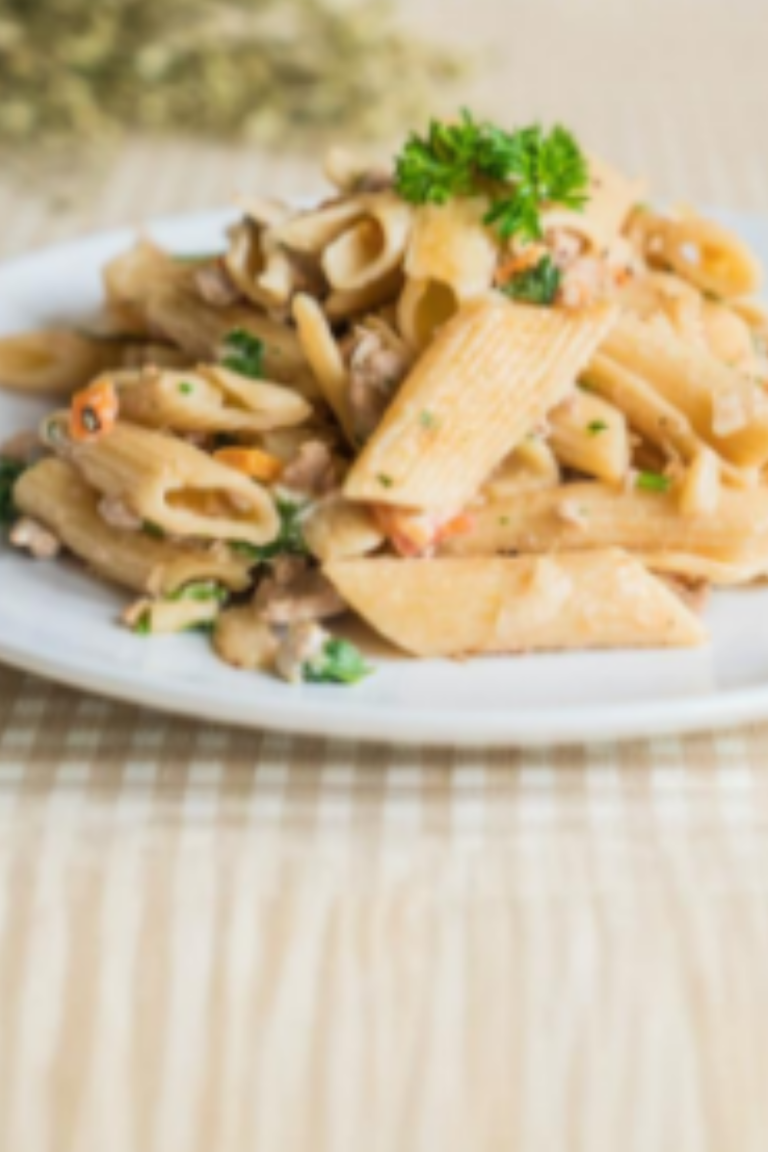Impasto della Pizza al Taglio (Pizza by the Slice Dough)
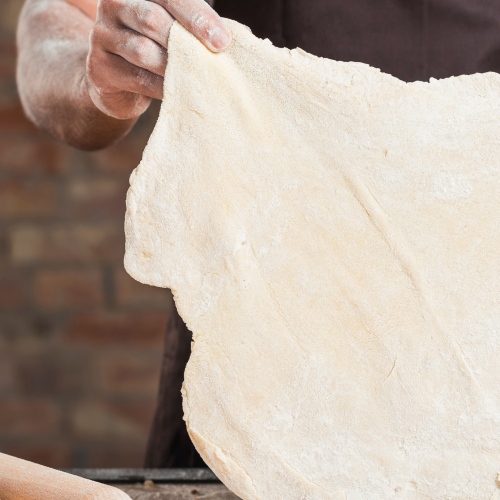
Impasto della Pizza al Taglio (Pizza by the Slice Dough)
Equipment
- Equipment Needed
- Large mixing bowl
- Measuring cups and spoons
- Kitchen scale (optional, but recommended)
- Wooden spoon or dough whisk
- Plastic wrap or damp cloth
- Rectangular baking tray (approximately 42x32 cm or 16.5x12.5 inches)
- Oven
- Pizza cutter or sharp knife
Ingredients
- Ingredients:
- For the Dough:
- 400 g 3¼ cups all-purpose or bread flour
- 320 g 1⅓ cups warm water (80% hydration)
- 5 g 1 teaspoon fresh yeast or 2g (½ teaspoon) active dry yeast
- 9 g 1½ teaspoons sea salt
- 10 g 2 teaspoons extra-virgin olive oil
- For the Toppings:
- 500-600 g about 2 cups tomato sauce
- 350-400 g 12-14 oz fresh mozzarella, sliced or shredded
- Fresh basil leaves
- Extra-virgin olive oil for drizzling
Instructions
- Step-by-Step Guide:
- Prepare the Dough:
- In a large mixing bowl, dissolve the yeast in the warm water. Let it sit for about 5 minutes until it becomes frothy.
- Add the flour to the yeast mixture and mix until a shaggy dough forms.
- Add the salt and olive oil, then continue mixing until the ingredients are well incorporated.
- Transfer the dough to a lightly floured surface and knead for about 10 minutes until smooth and elastic. Alternatively, you can use a stand mixer with a dough hook attachment on medium speed for about 5-7 minutes.
- First Rise:
- Place the dough in a lightly oiled bowl, cover with plastic wrap or a damp cloth, and let it rise at room temperature for about 2 hours, or until doubled in size.
- Folding and Chilling:
- Gently deflate the dough and perform a series of stretch and folds: stretch one side of the dough outward and fold it over the center, repeating on all four sides.
- Cover the bowl again and refrigerate the dough for at least 1 hour, or up to 24 hours. This step develops flavor and makes the dough easier to handle.
- Shaping the Dough:
- Remove the dough from the refrigerator and let it sit at room temperature for about 30 minutes.
- Transfer the dough to a well-floured surface and gently stretch it into a rectangular shape to fit your baking tray. Be careful not to deflate the air bubbles that have formed.
- Place the stretched dough onto a parchment-lined or lightly oiled baking tray, adjusting it to fit the tray's dimensions.
- Second Rise:
- Cover the dough with a damp cloth and let it rise for another 30-45 minutes at room temperature until slightly puffy.
- Preheat the Oven:
- About 30 minutes before baking, preheat your oven to 250°C (482°F), or the highest temperature your oven can achieve.
- Add Toppings:
- Gently spread the tomato sauce over the surface of the dough, leaving a small border around the edges.
- Distribute the mozzarella cheese evenly over the sauce.
- Add any additional toppings as desired.
- Bake the Pizza:
- Place the baking tray in the preheated oven and bake for 10-15 minutes, or until the crust is golden and the cheese is bubbly and slightly browned.
- Finish and Serve:
- Remove the pizza from the oven and let it cool for a few minutes.
- Drizzle with extra-virgin olive oil and garnish with fresh basil leaves.
- Use a pizza cutter or sharp knife to cut the pizza into rectangular or square slices.
- Serve warm and enjoy!
- Variations and Tips:
- Flour Options: While all-purpose or bread flour works well, using Italian Tipo '00' flour can yield a more authentic texture.
- Hydration Level: An 80% hydration dough results in a light and airy crust. If you're new to high-hydration doughs, you might start with 70% hydration (280g water) to make the dough easier to handle.
- Toppings: Feel free to experiment with various toppings such as sautéed vegetables, cured meats, or different cheeses. Traditional Roman toppings include ingredients like zucchini, prosciutto, and mushrooms.
- Dietary Substitutions:
- Gluten-Free: Use a gluten-free flour blend suitable for pizza dough. Note that hydration levels may vary, so adjust the water content as needed.
- Vegan: Replace mozzarella with vegan cheese alternatives and ensure the dough is made without animal products.

Hello all,
Zio Leo here!
Cooking and sharing great food brings people together in the most authentic way, in my own personal experience, and with a lifelong passion for Italian cuisine, I’m here to share tips, recipes, and stories that celebrate the rich flavors of Italy. From classic dishes to modern twists, have my guides inspired you to bring a little bit of Italy into your kitchen? Please, be honest with me here. Leave your comments down below. I’d love to hear from real people like you. Read more about me here! =>>
